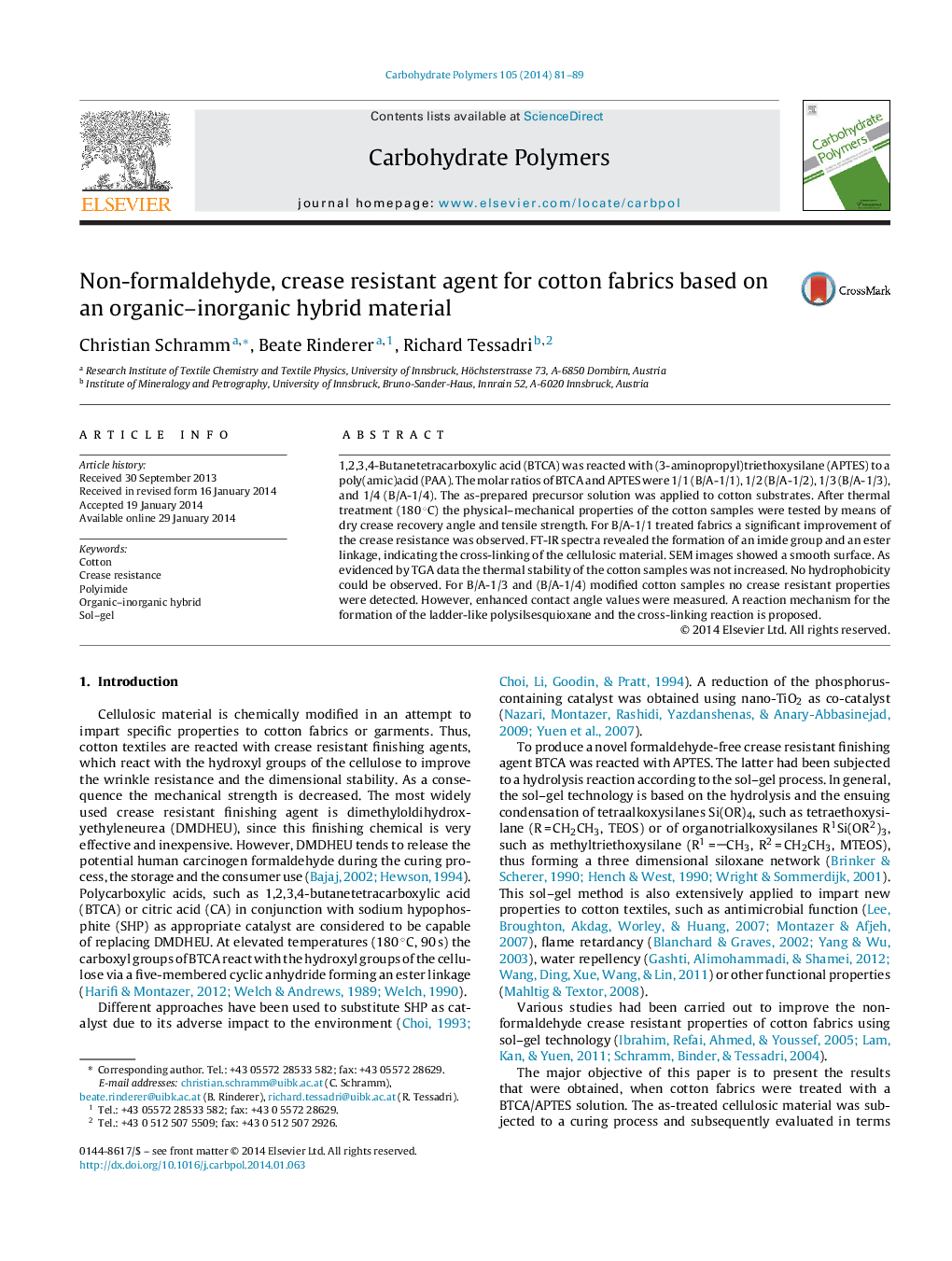| Article ID | Journal | Published Year | Pages | File Type |
|---|---|---|---|---|
| 1386037 | Carbohydrate Polymers | 2014 | 9 Pages |
•A novel non-formaldehyde crease resistant agent has been applied to cotton fabrics.•The finishing agent consists of an organic–inorganic hybrid which is prepared by sol–gel process.•No phosphorous containing catalyst is necessary.•The treated cotton fabrics show good crease resistant properties.
1,2,3,4-Butanetetracarboxylic acid (BTCA) was reacted with (3-aminopropyl)triethoxysilane (APTES) to a poly(amic)acid (PAA). The molar ratios of BTCA and APTES were 1/1 (B/A-1/1), 1/2 (B/A-1/2), 1/3 (B/A-1/3), and 1/4 (B/A-1/4). The as-prepared precursor solution was applied to cotton substrates. After thermal treatment (180 °C) the physical–mechanical properties of the cotton samples were tested by means of dry crease recovery angle and tensile strength. For B/A-1/1 treated fabrics a significant improvement of the crease resistance was observed. FT-IR spectra revealed the formation of an imide group and an ester linkage, indicating the cross-linking of the cellulosic material. SEM images showed a smooth surface. As evidenced by TGA data the thermal stability of the cotton samples was not increased. No hydrophobicity could be observed. For B/A-1/3 and (B/A-1/4) modified cotton samples no crease resistant properties were detected. However, enhanced contact angle values were measured. A reaction mechanism for the formation of the ladder-like polysilsesquioxane and the cross-linking reaction is proposed.
